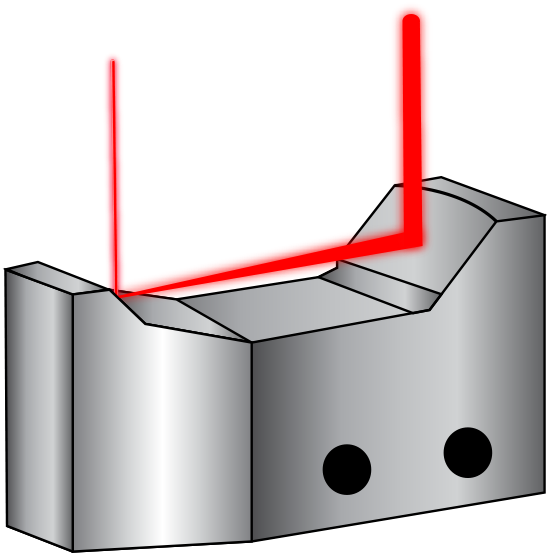
 TECHSPEC® components are designed, specified, or manufactured by Edmund Optics. Learn More
TECHSPEC® components are designed, specified, or manufactured by Edmund Optics. Learn More
TECHSPEC® Canopus® Reflective Beam Expanders are ideal for applications requiring broadband or achromatic beam expansion and a wide variety of light sources. The all-reflective design enables these beam expanders to be used with a variety of lasers including tunable, ultraviolet, and ultrafast sources, while the innovative design ensures high precision with minimal wavefront distortion. A variety of integrated design elements, including reflective flats, threaded holes, and thru-holes, simplify alignment, mounting, and integration into any laser application. The monolithic design ensures performance and stability independent of changes in temperature. TECHSPEC Canopus Reflective Beam Expanders are available in 2X, 3X, and 5X magnifications, along with coating options for the UV, Visible, and IR spectra.
For more cost sensitive applications, Edmund Optics also offers TECHSPEC Scorpii® Nd:YAG Beam Expanders. For HeNe laser applications, TECHSPEC Arcturus® HeNe Beam Expanders are available. For applications where rotating optics are acceptable, the TECHSPEC Vega® Laser Line Beam Expanders and TECHSPEC Vega® Broadband Beam Expanders are available. For higher precision applications where sliding optics are necessary, please see our TECHSPEC Draconis® Nd:YAG Laser Line Beam Expanders or TECHSPEC Draconis® Broadband Beam Expanders.


Edmund Optics offers comprehensive custom manufacturing services for optical and imaging components tailored to your specific application requirements. Whether in the prototyping phase or preparing for full-scale production, we provide flexible solutions to meet your needs. Our experienced engineers are here to assist—from concept to completion.
Our capabilities include:
Learn more about our custom manufacturing capabilities or submit an inquiry here.
or view regional numbers
QUOTE TOOL
enter stock numbers to begin
Copyright 2024, Edmund Optics Singapore Pte. Ltd, 18 Woodlands Loop #04-00, Singapore 738100
California Consumer Privacy Acts (CCPA): Do Not Sell or Share My Personal Information
California Transparency in Supply Chains Act
The FUTURE Depends On Optics®